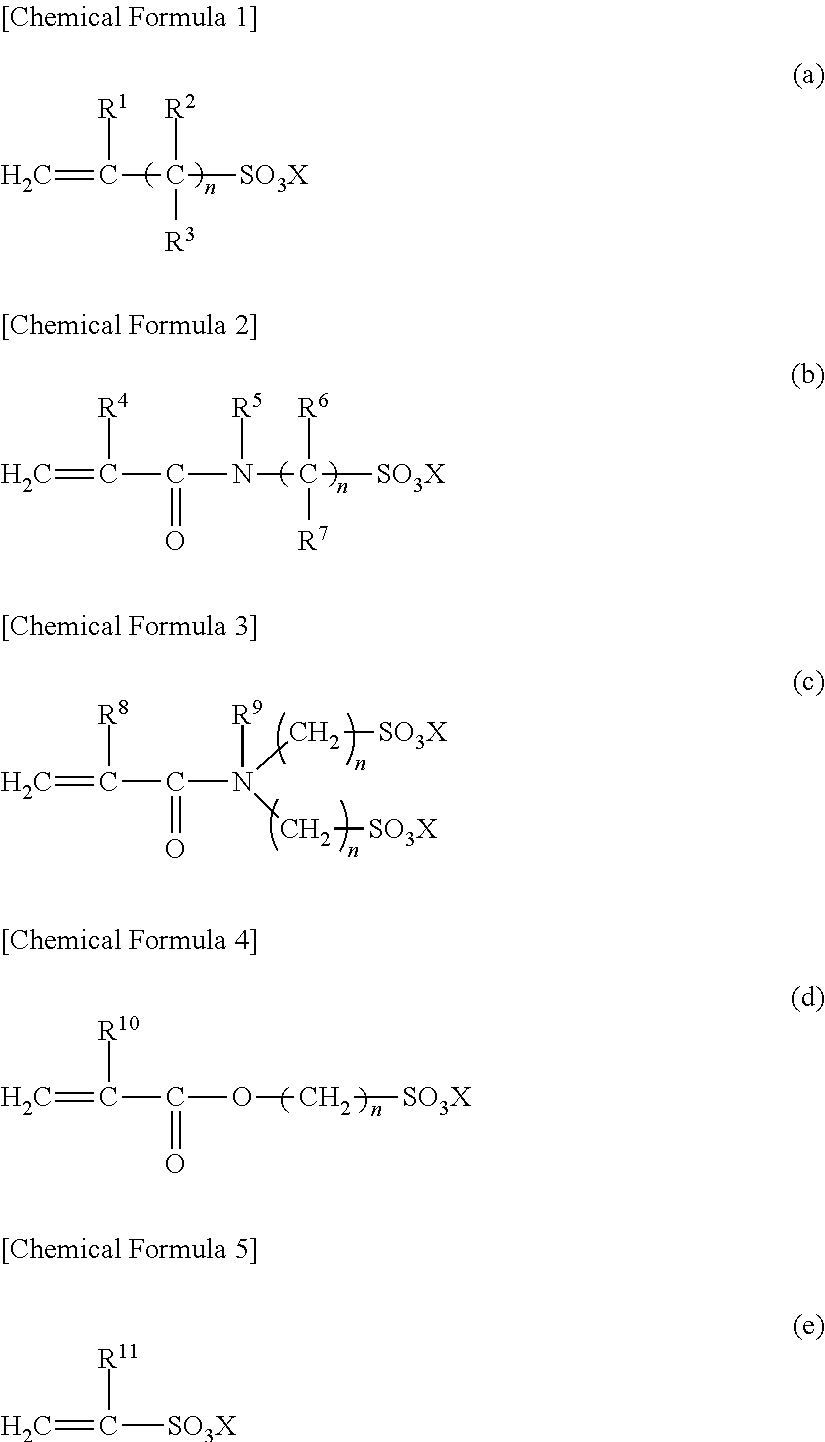Dispersion stabilizer for suspension polymerization and method for producing vinyl resin
a technology of dispersion stabilizer and suspension polymerization, which is applied in the field of dispersion stabilizer, can solve the problems of difficult to fully meet the enhanced requirements of such a common pva, the drying needs to be carried out under more severe conditions or for a longer time to remove residual monomers, and the difficulty of dispersing residual monomers, etc., to achieve high water solubility, high polymerization stability, and good handleability
- Summary
- Abstract
- Description
- Claims
- Application Information
AI Technical Summary
Benefits of technology
Problems solved by technology
Method used
Image
Examples
production example 1
Production of PVA(A1)
[0100]Into a polymerization can were charged 1197 parts of vinyl acetate (hereinafter abbreviated as “VAc”), 603 parts of methanol, 0.44 parts of n-dodecanethiol (hereinafter abbreviated as “DDM”), and 1.16 parts of monomethyl maleate. After the air in the can was replaced by nitrogen, the mixture was heated to its boiling point. 2,2′-azobisisobutyronitrile in an amount of 0.05% relative to VAc and 10 parts of methanol were added. Then, the addition of a room-temperature methanol solution of DDM (a concentration of 5 wt. %) and a methanol solution of monomethyl maleate (a concentration of 3 wt. %) into the polymerization can was immediately started, and the addition of the methanol solution of DDM and the methanol solution of monomethyl maleate was continued to keep the concentration of DDM and monomethyl maleate in the polymerization can constant with respect to VAc. The polymerization was thus conducted. Once the polymerization conversion rate reached 40%, the...
production example 21
Production of PVA(A21)
[0102]The produced PVA(A1) was heat-treated under a nitrogen atmosphere at 130° C. for 6 hours. Thus, PVA(A21) was obtained. Table 2 shows the values of the physical properties of the produced PVA(A21).
production example 22
Production of PVA(A22)
[0103]PVA(A22) shown in Table 2 was produced in the same manner as in Production Example 1, except that saponification was carried out by changing the type and amount of a saponification catalyst, the saponification time, the saponification temperature, and the saponification system water content from those in the saponification step for synthesizing PVA(A1) shown in Production Example 1 and then sodium hydroxide in an amount enough to neutralize the saponification catalyst used was added to stop the saponification reaction. Tables 1, 3, 4, and 5 show the production conditions, the type of the chain transfer agent used, the type of the comonomer used, and the saponification conditions, respectively.
PUM
| Property | Measurement | Unit |
|---|---|---|
| temperature | aaaaa | aaaaa |
| degree of saponification | aaaaa | aaaaa |
| viscosity average degree of polymerization | aaaaa | aaaaa |
Abstract
Description
Claims
Application Information
 Login to View More
Login to View More - R&D
- Intellectual Property
- Life Sciences
- Materials
- Tech Scout
- Unparalleled Data Quality
- Higher Quality Content
- 60% Fewer Hallucinations
Browse by: Latest US Patents, China's latest patents, Technical Efficacy Thesaurus, Application Domain, Technology Topic, Popular Technical Reports.
© 2025 PatSnap. All rights reserved.Legal|Privacy policy|Modern Slavery Act Transparency Statement|Sitemap|About US| Contact US: help@patsnap.com

